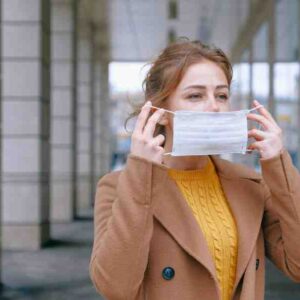
Table of Contents
Introduction-
Indoor plants bring life and eyeful to our homes. However, not all plants are unscratched for our canine companions. Some common indoor plants can be toxic to dogs, causing various health issues. Knowing which plants pose a risk and how to protect your dog is essential. This article explores the top 10 toxic indoor plants for dogs and offers practical advice on keeping your dog safe.
- Sago Palm (Cycas revoluta)
The Sago Palm is popular for its tropical appearance. However, all parts of this plant, especially the seeds, are highly toxic to dogs. Ingesting Sago Palm can cause severe liver damage, vomiting, diarrhea, and seizures. The plant contains cycasin, a toxin that can lead to liver failure and even death if consumed by dogs.
If you have a Sago Palm, place it in an area inaccessible to pets. Consider replacing it with a non-toxic alternative to eliminate the risk altogether. Always seek immediate veterinary attention if you suspect your dog has ingested any part of this plant.
- Aloe Vera (Aloe barbadensis miller)
Aloe Vera is known for its healing properties and is common in households. While beneficial for humans, it is toxic to dogs. Ingesting Aloe Vera can cause vomiting, diarrhea, lethargy, and tremors. The plant contains saponins and anthraquinones, which are harmful to dogs if ingested.
Keep Aloe Vera plants out of reach or in rooms where your dog doesn’t have access. Educate yourself about other plants that are safe to use in your home if you have pets. Always monitor your dog and consult your vet if any ingestion occurs.
- Philodendron
Philodendrons are easy to grow and add a touch of greenery indoors. Unfortunately, they contain calcium oxalate crystals, which are toxic to dogs. Ingesting Philodendron can cause oral irritation, excessive drooling, vomiting, and difficulty swallowing. The sharp crystals can damage the mouth and digestive tract, leading to severe discomfort.
To prevent accidental ingestion, place Philodendron plants on high shelves or use hanging planters. Alternatively, choose non-toxic plants that offer similar aesthetic appeal. Always ensure your home is safe for your pets by removing potential hazards.
- Dieffenbachia (Dumb Cane)
Dieffenbachia, or Dumb Cane, is prized for its attractive foliage. However, it poses a significant risk to dogs. The plant contains insoluble calcium oxalates that can cause oral irritation, swelling, and difficulty breathing if ingested. Even small amounts can lead to serious symptoms, including oral burns and stomach upset.
Keep Dieffenbachia plants in areas your dog cannot access. Be vigilant and remove the plant if your dog tends to explore and chew on household items. Consult your vet immediately if your dog shows signs of ingestion.
- Pothos (Devil’s Ivy)
Pothos is a common houseplant known for its easy care. However, it is toxic to dogs. Pothos contains insoluble calcium oxalates that can cause oral irritation, vomiting, and difficulty swallowing. Contact with the plant’s sap can also lead to skin irritation.
To keep your dog safe, place Pothos plants in hanging baskets or high shelves where your pet cannot reach them. Regularly check your plants for signs of chewing and consult your vet if your dog ingests any part of the plant.
- ZZ Plant (Zamioculcas zamiifolia)
The ZZ Plant is a low-maintenance favorite for many plant enthusiasts. Yet, it is toxic to dogs. The plant contains calcium oxalates, which can cause oral irritation, vomiting, and diarrhea. Even minimal ingestion can lead to discomfort and potential health risks.
Position ZZ Plants in areas that are off-limits to your dog or consider using pet-safe alternatives. If your dog displays symptoms after ingesting any part of the ZZ Plant, contact your vet immediately for guidance and treatment.
- Peace Lily (Spathiphyllum)
Peace Lilies are admired for their elegant flowers and lush leaves. However, they pose a danger to dogs. The plant contains calcium oxalate crystals that can cause oral irritation, drooling, vomiting, and difficulty swallowing. In severe cases, ingestion can lead to swelling of the mouth and throat.
Keep Peace Lilies out of reach or choose safer plant options for your home. Educate yourself on recognizing toxic plants and creating a pet-friendly environment. Always act quickly if you suspect your dog has ingested any part of a toxic plant.
- Snake Plant (Sansevieria trifasciata)
The Snake Plant, also known as Mother-in-Law’s Tongue, is a popular choice for indoor décor. However, it is toxic to dogs. The plant contains saponins, which can rationalization nausea, vomiting, and diarrhea if ingested. Even small amounts can lead to digestive upset and discomfort.
To ensure your dog’s safety, place Snake Plants in areas inaccessible to pets. Alternatively, replace them with non-toxic plants that provide similar visual appeal. Always monitor your pet’s behavior around plants and seek veterinary care if ingestion occurs.
- Jade Plant (Crassula ovata)
Jade Plants are common in homes and offices due to their low maintenance. However, they are toxic to dogs. Ingesting Jade Plant can cause vomiting, lethargy, and coordination issues. The plant contains compounds that can affect the nervous system, leading to more severe symptoms.
Position Jade Plants in places your dog cannot access or consider removing them from your home. Opt for pet-safe alternatives that won’t pose a risk to your furry friend. Consult your vet if you notice any signs of ingestion.
- Cyclamen
Cyclamen is admired for its beautiful, colorful flowers. However, it is highly toxic to dogs. Ingesting Cyclamen can cause severe vomiting, diarrhea, and even heart abnormalities. The plant contains saponins, which are especially concentrated in the tubers, making them extremely dangerous if ingested.
Keep Cyclamen plants out of reach and consider using pet-safe options instead. Always monitor your dog around potentially toxic plants and seek immediate veterinary attention if you suspect ingestion.
How to take care your dog from toxic plants?
Protecting your dog from toxic plants involves awareness and preventive measures. Identify and Remove Toxic Plants
The first step is identifying and removing toxic plants from your home. If removal isn’t possible, place these plants in areas your dog cannot access. High shelves or closed rooms are good options.
Creating plant-free zones in your home can also be effective. For example, designate a specific room or area as a safe space where your dog can roam freely without the risk of encountering toxic plants.
- Opt for Pet-Safe Plants
Choose pet-safe plants to decorate your home. Research non-toxic alternatives that provide beauty without risk. Some safe choices include spider plants, Boston ferns, and bamboo palms.
Consider succulents like Haworthia or Echeveria, which are not only safe but also easy to care for. Herbs like basil and rosemary can also add greenery and are safe for pets. Using pet-safe plants ensures that even if your dog decides to nibble on them, they won’t suffer any adverse effects.
- Educate Yourself
Learn to recognize toxic plants and understand their effects on dogs. This knowledge will help you make informed decisions about plant safety in your home. Regularly updating your knowledge about pet safety can be beneficial.
Many resources are available online, including databases and mobile apps, that list toxic and non-toxic plants. Staying informed helps you avoid bringing hazardous plants into your home and allows you to take quick action if your dog encounters a toxic plant.
- Monitor Your Dog
Regularly monitor your dog’s ehaviour and interactions with plants. Early detection of plant ingestion can lead to prompt treatment and better outcomes. Create a routine to check on your dog and their environment, especially after bringing new plants into the home.
If you notice your dog showing unusual interest in certain plants, take measures to relocate those plants out of reach. Early intervention can prevent severe health issues and ensure your dog’s safety.
- Use Barriers
Consider using barriers to prevent your dog from accessing dangerous areas. An electric fence for dogs can help keep pets away from specific parts of your home where toxic plants are placed. Installing physical barriers such as gates or pet pens can also effectively restrict your dog’s access to risky areas. For outdoor areas, consider using landscaping techniques to create safe zones free from hazardous plants.
- Pet-Safe Cleaning Products
Opt for pet-safe cleaning products to minimize risks. Look for products labeled as non-toxic and free from harsh chemicals like ammonia and bleach. Alternatively, consider making your own cleaning solutions using natural ingredients like vinegar and baking soda, which are safer for pets.
- Secure Storage of Chemicals
Store all chemicals, including fertilizers and pesticides, in secure areas where your dog cannot access them. Dogs are naturally curious and may investigate containers if left within reach. Keep these products in locked cabinets or high shelves to prevent accidental ingestion. Always follow safe storage guidelines to ensure these substances are out of your pet’s reach.
- Routine Vet Visits
These visits can help detect any issues early and provide guidance on keeping your home safe. Your vet can also offer specific advice based on your dog’s breed, age, and health condition. Routine check-ups ensure your dog stays healthy and allow you to address any concerns about their environment promptly.
Conclusion
Knowing which indoor plants are toxic to dogs is crucial for maintaining a safe environment. By identifying and removing these plants, choosing pet-safe alternatives, and monitoring your dog, you can prevent potential health issues. Always consult your vet if you suspect your dog has ingested a toxic plant. Your vigilance and proactive measures ensure a safe and happy home for your furry friend.
Maintaining a pet-friendly home extends beyond plants. By incorporating safe cleaning practices, secure storage, and designated play areas, you create a comprehensive safe environment. Regular vet visits add an extra layer of protection, ensuring your pet’s well-being. Balancing your love for indoor greenery with the safety of your pets is possible with careful planning and awareness.
You can read our latest post


